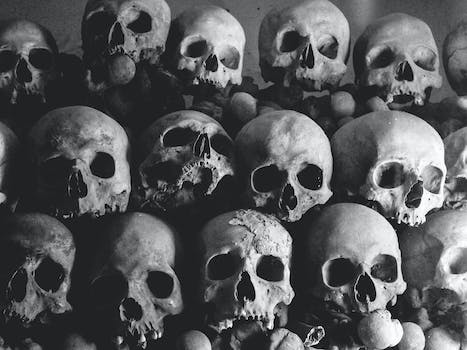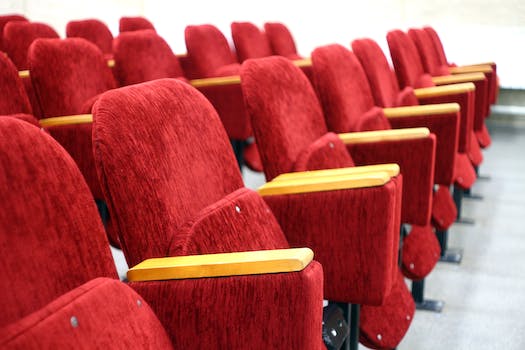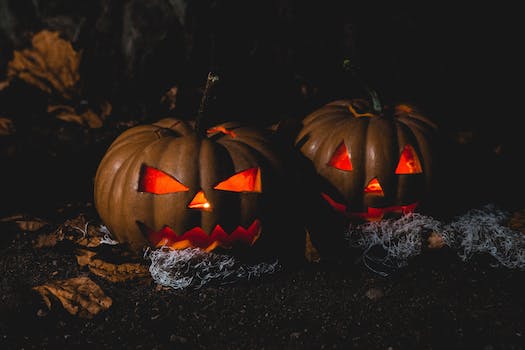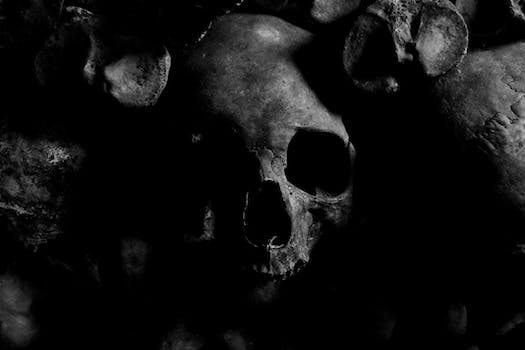Scary movies have always possessed a unique and captivating allure, drawing audiences into a world of spine-chilling suspense and heart-pounding thrills. With their ability to evoke intense emotions like fear, excitement, and anticipation, these horror films have become a beloved genre that continues to captivate viewers of all ages. In this article, we delve into the terrifying allure of scary movie horror, exploring the elements that make these films so enticing and the reasons behind their enduring popularity.
- 1. History of Scary Movies
- 1.1. Early Origins of Horror Films
- 1.2. The Evolution of Scary Movie Genres
- 1.3. Iconic Scary Movie Directors
- 1.4. Impact of Scary Movies on Pop Culture
- 1.5. Contemporary Trends in Scary Movies
- 2. Elements of a Terrifying Horror Movie
- 2.1. Suspense and Tension
- 2.2. Gore and Special Effects
- 2.3. Psychological Thrills
- 2.4. Dark Atmosphere and Setting
- 2.5. Effective Use of Sound
- 3. Popular Scary Movie Franchises
1. History of Scary Movies
Scary movies have a long and fascinating history, captivating audiences for decades. The origins of scary movies can be traced back to the silent film era, with classics like ‘Nosferatu’ (1922) and ‘The Cabinet of Dr. Caligari’ (1920) setting the stage for the horror genre. These early films relied heavily on atmospheric cinematography and eerie storytelling to create a sense of fear and suspense.
In the 1930s and 1940s, Universal Pictures became synonymous with horror movies, introducing iconic characters like Dracula, Frankenstein’s monster, and the Wolf Man. These movies, such as ‘Dracula’ (1931) and ‘Frankenstein’ (1931), became cult classics and laid the foundation for the golden age of horror.
The 1950s and 1960s saw a shift in the horror genre, with the emergence of psychological thrillers like Alfred Hitchcock’s ‘Psycho’ (1960). These films delved into the human psyche, exploring themes of madness and suspense, and left audiences on the edge of their seats.
In the 1970s and 1980s, slasher films gained popularity, with franchises like ‘Halloween’ (1978) and ‘Friday the 13th’ (1980) becoming cultural phenomena. These movies introduced masked killers and gruesome violence, pushing the boundaries of what was considered acceptable in mainstream cinema.
The 1990s and 2000s witnessed a revival of supernatural horror, with movies like ‘The Sixth Sense’ (1999) and ‘The Ring’ (2002) captivating audiences with their supernatural elements and unexpected twists. This era also saw the rise of found footage horror films, such as ‘The Blair Witch Project’ (1999), which added a new level of realism and fear.
Today, scary movies continue to evolve and innovate, with filmmakers exploring new subgenres and pushing the boundaries of horror. From psychological thrillers to supernatural tales, horror movies have a timeless allure that keeps audiences coming back for more.
1.1. Early Origins of Horror Films
The early origins of horror films can be traced back to the late 19th century. One of the earliest known horror films is Georges Méliès’ famous silent film, ‘Le Manoir du Diable’ (The House of the Devil), released in 1896. This short film, running for just over three minutes, featured eerie and supernatural elements, including a bat transforming into a man and a cauldron that magically produces skeletons. Méliès’ innovative use of special effects and his dark, atmospheric settings set the stage for the horror genre in cinema.
Following Méliès’ pioneering work, other filmmakers began experimenting with the horror genre. In 1910, Edison Studios released ‘Frankenstein,’ a short film adaptation of Mary Shelley’s famous novel. This early interpretation of the classic monster tale laid the foundation for the countless adaptations and reimaginings that would follow.
The 1920s saw the rise of German Expressionism, which greatly influenced the development of horror cinema. Films like ‘The Cabinet of Dr. Caligari’ (1920) and ‘Nosferatu’ (1922) employed distorted sets, shadowy lighting, and exaggerated performances to create a sense of unease and terror. These films pushed the boundaries of cinematic storytelling and set the stage for the more psychological and atmospheric horror films that would emerge in later decades.
In the 1930s, Universal Pictures introduced iconic horror characters that would become synonymous with the genre. Films like ‘Dracula’ (1931), ‘Frankenstein’ (1931), and ‘The Mummy’ (1932) became instant classics and solidified the popularity of the horror genre.
The horror genre continued to evolve and diversify in the following decades, with notable contributions from filmmakers like Alfred Hitchcock, who masterfully blended suspense and psychological terror in films such as ‘Psycho’ (1960) and ‘The Birds’ (1963).
Today, horror films encompass a wide range of subgenres, from supernatural thrillers to psychological horror and slasher films. The early origins of horror films have paved the way for the enduring allure of scary movies, captivating audiences with their ability to evoke fear and tap into our deepest nightmares.
1.2. The Evolution of Scary Movie Genres
Scary movies have undergone a fascinating evolution over the years, with different subgenres emerging to cater to the ever-changing tastes of horror enthusiasts. From the early days of classic suspense and psychological thrillers to the modern era of supernatural creatures and found footage, the history of scary movies is a testament to the creativity and ingenuity of filmmakers.
In the early 1900s, horror movies were primarily focused on creating a sense of suspense and fear through atmospheric storytelling. Films like Nosferatu (1922) and The Cabinet of Dr. Caligari (1920) laid the foundation for the genre, introducing iconic characters and eerie settings that would go on to inspire future generations of filmmakers.
As time went on, the horror genre expanded and diversified. In the 1930s and 1940s, Universal Studios brought classic monsters like Dracula, Frankenstein’s Monster, and The Wolf Man to the big screen, captivating audiences with tales of supernatural creatures and their terrifying exploits.
The 1950s and 1960s saw a shift towards more psychological horror, with films like Psycho (1960) and Rosemary’s Baby (1968) delving into the depths of human fears and anxieties. These movies relied on suspenseful storytelling and mind-bending twists to keep audiences on the edge of their seats.
In the 1970s and 1980s, the slasher subgenre became incredibly popular, thanks to iconic films like Halloween (1978) and Friday the 13th (1980). These movies introduced masked killers and gruesome violence, becoming a staple of the horror genre and inspiring countless imitators.
The 1990s and early 2000s witnessed a resurgence of supernatural horror, with movies like The Sixth Sense (1999) and The Ring (2002) captivating audiences with their eerie atmospheres and chilling ghostly apparitions.
More recently, found footage films have gained popularity, with movies like Paranormal Activity (2007) and The Blair Witch Project (1999) utilizing a documentary-style approach to create a sense of realism and immersion.
The evolution of scary movie genres continues to this day, with filmmakers constantly pushing the boundaries of what is considered terrifying. Whether it’s psychological horror, supernatural entities, or innovative storytelling techniques, scary movies have captivated audiences for decades and will likely continue to do so in the future.
1.3. Iconic Scary Movie Directors
Iconic Scary Movie Directors
Throughout the history of scary movies, there have been several directors who have made a significant impact on the genre. These visionary filmmakers have brought their unique storytelling styles and creative visions to create some of the most iconic and terrifying movies of all time.
1. Alfred Hitchcock
Known as the master of suspense, Alfred Hitchcock has directed some of the most influential and memorable horror films in history. Classics like ‘Psycho’ and ‘The Birds’ continue to captivate audiences with their expertly crafted suspense and psychological terror.
2. John Carpenter
John Carpenter is another legendary director known for his contributions to the horror genre. His 1978 film ‘Halloween’ introduced the world to the iconic character of Michael Myers and set the standard for slasher films. Carpenter’s ability to build tension and create atmospheric horror has made him a revered figure among horror enthusiasts.
3. Wes Craven
Wes Craven is often regarded as one of the greatest horror directors of all time. He is best known for creating the ‘Nightmare on Elm Street’ franchise, which introduced the iconic character Freddy Krueger. Craven’s ability to blend horror with elements of fantasy and psychological terror has cemented his status as a master of the genre.
4. James Wan
In recent years, James Wan has emerged as a prominent director in the horror genre. His films, such as ‘Saw’ and ‘The Conjuring’ series, have garnered both critical acclaim and commercial success. Wan’s ability to create intense and chilling atmospheres has made him a favorite among horror fans.
These directors, among many others, have left an indelible mark on the history of scary movies. Their innovative storytelling techniques and ability to evoke fear and suspense have shaped the genre into what it is today.
1.4. Impact of Scary Movies on Pop Culture
Scary movies have had a profound impact on pop culture throughout history. These spine-chilling films have captivated audiences and left a lasting impression on society. From the early days of silent horror films to the modern era of psychological thrillers, scary movies have shaped the way we think about fear and entertainment.
The history of scary movies dates back to the late 19th century when the first horror films were produced. These early films, such as George Méliès’ ‘Le Manoir du Diable’ (1896), paved the way for the development of the genre. As technology advanced, filmmakers began experimenting with special effects and sound, adding a new level of terror to their creations.
In the 1920s and 1930s, Universal Studios became known for its iconic horror films, including ‘Dracula’ (1931) and ‘Frankenstein’ (1931). These movies introduced famous monsters that would become cultural icons and set the stage for future horror films. The popularity of these films led to the creation of sequels and spin-offs, further establishing the horror genre as a staple of the film industry.
The 1960s and 1970s marked a significant shift in the horror genre, with the emergence of psychological thrillers and slasher films. Movies like Alfred Hitchcock’s ‘Psycho’ (1960) and John Carpenter’s ‘Halloween’ (1978) brought a new level of suspense and fear to audiences. These films not only scared viewers but also challenged societal norms and explored deeper psychological themes.
In recent years, the popularity of scary movies has only continued to grow. With advancements in technology, filmmakers have been able to create increasingly realistic and terrifying experiences for audiences. The success of franchises like ‘The Conjuring’ and ‘Paranormal Activity’ has shown that there is still a strong demand for horror films in today’s pop culture.
Overall, scary movies have had a lasting impact on pop culture, shaping our fears and influencing the way we consume entertainment. Whether it’s through iconic monsters, psychological thrillers, or modern found footage films, the allure of scary movies continues to captivate audiences and leave a lasting impression on society.
1.5. Contemporary Trends in Scary Movies
Contemporary scary movies have undergone significant transformations in recent years. Filmmakers have embraced innovative storytelling techniques and advanced special effects to heighten the terror experienced by viewers. One of the prominent trends in contemporary scary movies is the focus on psychological horror. Instead of relying solely on jump scares and gory visuals, these movies delve into the depths of human psyche, using suspense, tension, and mind games to terrify the audience. This shift towards psychological horror has resulted in a more nuanced and intellectually stimulating viewing experience.
Another trend in contemporary scary movies is the incorporation of supernatural elements. While classic horror films often revolved around real-world dangers and fears, such as serial killers or haunted houses, modern scary movies have introduced supernatural entities like demons, ghosts, and monsters. These supernatural elements bring a heightened sense of fear and unpredictability, as they operate outside the realm of logic and rationality.
Furthermore, contemporary scary movies have also embraced found footage as a popular narrative technique. This style of filmmaking, where the story is presented as if it were discovered footage from a recording device, adds a sense of realism and immediacy to the horror. By mimicking the look and feel of amateur recordings, found footage movies create a chilling atmosphere that resonates with today’s tech-savvy audience.
In conclusion, contemporary scary movies have evolved to cater to the changing preferences and sensibilities of the audience. The focus on psychological horror, inclusion of supernatural elements, and utilization of found footage technique have revitalized the genre, offering a fresh and terrifying experience to horror enthusiasts.
2. Elements of a Terrifying Horror Movie
Horror movies have a unique ability to captivate and terrify audiences, leaving them on the edge of their seats. The success of a horror movie often lies in its ability to effectively create an atmosphere of fear and suspense. There are several key elements that contribute to the allure of a scary movie, making it truly terrifying.
One essential element is a compelling and eerie setting. Whether it’s a haunted house, an isolated cabin in the woods, or a creepy asylum, the setting plays a crucial role in establishing the tone and atmosphere of the movie. A well-chosen location can create a sense of unease and anticipation, setting the stage for terrifying events to unfold.
Another important element is a strong and menacing antagonist. The villain or monster in a horror movie is often what drives the fear factor. Whether it’s a supernatural entity, a psychopathic killer, or a vengeful spirit, a formidable antagonist adds a layer of dread and suspense. The audience becomes invested in the protagonist’s struggle to survive against this terrifying foe.
A well-crafted plot with unexpected twists and turns also contributes to the allure of a scary movie. A horror movie that keeps the audience guessing and surprises them with unexpected revelations can intensify the fear factor. Unpredictability creates a sense of vulnerability and keeps the viewers engaged and on the edge of their seats.
Furthermore, effective use of sound and music can greatly enhance the horror movie experience. The right combination of eerie sounds, chilling music, and well-timed silence can create a tense and unsettling atmosphere. Jump scares accompanied by a sudden loud noise can make even the bravest of viewers jump out of their seats.
Lastly, skillful cinematography and visual effects play a crucial role in making a horror movie truly terrifying. Clever camera angles, creative lighting techniques, and realistic special effects can heighten the sense of terror and make the audience believe in the horrors unfolding on the screen.
In conclusion, the elements of a terrifying horror movie include a compelling setting, a formidable antagonist, an unpredictable plot, effective use of sound and music, and skillful cinematography and visual effects. When these elements are combined effectively, they create a truly terrifying and unforgettable movie watching experience.
2.1. Suspense and Tension
Suspense and tension are essential elements of a terrifying horror movie. These elements create a sense of unease and anticipation, keeping the audience on the edge of their seats. By skillfully building suspense, a horror movie can immerse viewers in a world of fear and dread.
One way to create suspense is through the use of atmospheric settings. Dark, eerie locations such as abandoned houses, haunted woods, or isolated hospitals can instantly set the stage for a terrifying experience. The unknown lurking in the shadows, combined with eerie sound effects, can send chills down the viewers’ spines.
Another effective technique is the use of jump scares. These sudden, unexpected moments of fright can catch the audience off guard and elicit a strong reaction. Whether it’s a door slamming shut, a figure appearing out of nowhere, or a loud noise, jump scares can jolt viewers and increase their heart rate.
Furthermore, the pacing of a horror movie plays a crucial role in building suspense. By gradually escalating tension and pacing the scares, filmmakers can keep the audience engaged and anxious for what’s to come. Moments of calm before a sudden burst of terror can heighten the impact and leave a lasting impression.
Lastly, the use of musical scores can greatly enhance the suspense and tension in a horror movie. Haunting melodies, dissonant chords, and sudden crescendos can intensify the overall atmosphere and create a sense of impending doom. The right music can manipulate the viewers’ emotions and elevate the fear factor.
In conclusion, suspense and tension are vital components of a terrifying horror movie. Through atmospheric settings, jump scares, pacing, and the power of music, filmmakers can effectively immerse the audience in a world of fear and keep them captivated throughout the entire film.
2.2. Gore and Special Effects
Gore and Special Effects
One of the key elements that make a horror movie truly terrifying is the use of gore and special effects. These visual elements play a crucial role in creating a sense of fear and unease in the audience. The realistic and graphic portrayal of blood, wounds, and violence can evoke strong emotions and make the horror movie more disturbing and horrifying. Additionally, the use of practical effects, such as prosthetics and animatronics, can enhance the realism and intensity of the terrifying scenes. The combination of well-executed gore and special effects can contribute to the overall terrifying allure of a scary movie horror.
2.3. Psychological Thrills
Psychological thrills play a crucial role in making a horror movie truly terrifying. These thrills engage the audience’s minds, evoking intense emotions and creating a sense of unease that lingers long after the movie ends. To achieve this, a horror movie must possess certain elements that heighten the psychological impact on the viewers.
One of the key elements of a terrifying horror movie is a well-developed atmosphere. The setting, lighting, and sound design all contribute to creating a sense of dread and foreboding. Whether it’s a dark and eerie haunted house or a desolate and isolated forest, the environment should be carefully crafted to instill fear in the audience.
Another important element is a compelling and unpredictable storyline. A horror movie that keeps the viewers guessing and constantly surprises them with unexpected twists and turns is more likely to generate psychological thrills. The plot should be carefully constructed to build tension and suspense, leaving the audience on the edge of their seats, wondering what will happen next.
Furthermore, effective use of sound and music can greatly enhance the psychological impact of a horror movie. The right combination of eerie sounds, chilling music, and unsettling silence can create a spine-tingling atmosphere that intensifies the fear experienced by the viewers. A sudden loud noise or a haunting melody can send shivers down the audience’s spines, heightening their sense of unease.
Lastly, a well-developed and complex antagonist is essential for a truly terrifying horror movie. Whether it’s a supernatural entity, a deranged serial killer, or a malevolent force, the antagonist should be deeply unsettling and capable of inspiring fear. Their motives and actions should be shrouded in mystery, adding an extra layer of psychological complexity to the narrative.
In conclusion, psychological thrills are crucial in creating a terrifying horror movie. Elements such as a well-developed atmosphere, a compelling storyline, effective use of sound and music, and a complex antagonist all contribute to the psychological impact on the audience. When these elements are skillfully combined, they can deliver a truly hair-raising and unforgettable cinematic experience.
2.4. Dark Atmosphere and Setting
A crucial element in creating a truly terrifying horror movie is the establishment of a dark atmosphere and setting. The dark atmosphere sets the mood and builds anticipation, intensifying the fear factor for the audience. It creates a sense of unease and discomfort, making the viewers more susceptible to the scares that lie ahead.
The setting plays a significant role in enhancing the horror experience. A spooky, desolate location such as an abandoned mansion, a haunted forest, or an isolated asylum can evoke a feeling of dread and isolation. The eerie silence, dim lighting, and decaying surroundings add to the overall sense of foreboding.
Incorporating a dark atmosphere and a chilling setting amplifies the impact of the horror elements in a movie. It allows the audience to immerse themselves in a world where anything can happen, heightening their sense of vulnerability and making the scares even more spine-chilling. This combination keeps viewers on the edge of their seats, eagerly anticipating the next terrifying moment.
2.5. Effective Use of Sound
Effective use of sound is a crucial element in creating a truly terrifying horror movie. The right combination of eerie sounds, ominous music, and spine-chilling effects can greatly enhance the overall experience for the audience. Sound can manipulate emotions, build tension, and create a sense of dread. It can make the viewers feel on edge and keep them fully engaged throughout the movie. From the subtle whispers in the darkness to the sudden loud noises, sound plays a vital role in establishing a frightening atmosphere and intensifying the scares. Whether it’s a haunting melody, a bone-chilling scream, or the unsettling silence right before a jump-scare, the skillful use of sound can make a horror movie truly unforgettable.
3. Popular Scary Movie Franchises
When it comes to popular scary movie franchises, there are a few that have truly captivated audiences with their terrifying allure. These franchises have managed to create a lasting impact on the horror genre, leaving viewers frightened and wanting more. From classic favorites to modern hits, here are some of the most popular scary movie franchises that continue to haunt our nightmares.
1. Halloween: The Halloween franchise is a true horror icon, starting with the original film released in 1978. The story follows the infamous serial killer Michael Myers as he stalks his victims, particularly targeting babysitters on Halloween night. With its chilling atmosphere and suspenseful plot, Halloween has become a staple in the horror genre.
2. Friday the 13th: This long-running franchise revolves around the hockey mask-wearing killer, Jason Voorhees. The films take place at the fictional Camp Crystal Lake, where a group of young campers fall victim to Jason’s deadly rampage. Known for its creative kills and suspenseful chase sequences, Friday the 13th has become synonymous with slasher horror.
3. Nightmare on Elm Street: Freddy Krueger, the iconic dream-haunting serial killer, takes center stage in the Nightmare on Elm Street franchise. The films explore the terrifying concept of a killer who can attack his victims in their dreams, making it impossible to escape his clutches. With its imaginative storyline and memorable villain, Nightmare on Elm Street has left a lasting impression on horror fans.
4. Saw: This franchise introduced audiences to the twisted mind of the Jigsaw Killer, who puts his victims through gruesome and morally challenging traps. The Saw films are known for their intricate plot twists and graphic violence, appealing to fans who enjoy a more psychological and gory horror experience.
5. Paranormal Activity: Taking a found-footage approach, the Paranormal Activity franchise focuses on supernatural occurrences that plague unsuspecting families. The films use a minimalistic style to build tension and create a sense of dread, making them a favorite among fans of supernatural horror.
These popular scary movie franchises have become cultural phenomena, inspiring numerous sequels, spin-offs, and even reboots. They continue to terrify audiences and contribute to the ever-evolving landscape of horror cinema.
3.1. The Nightmare on Elm Street Series
The Nightmare on Elm Street series is one of the most popular and enduring scary movie franchises in the horror genre. Created by Wes Craven, the series revolves around the terrifying character of Freddy Krueger, a disfigured and razor-gloved killer who haunts the dreams of teenagers in the fictional town of Springwood. What sets this franchise apart is its unique concept of a killer who can harm his victims in their dreams, making it almost impossible for them to escape his clutches. The Nightmare on Elm Street series has spawned numerous sequels, spin-offs, and even a crossover film with another iconic horror character. With its blend of suspense, supernatural elements, and gruesome kills, this franchise continues to captivate audiences and leave them with a lingering sense of terror long after the credits roll.
3.2. Halloween: The Michael Myers Saga
The Halloween franchise, centered around the infamous killer Michael Myers, has become one of the most popular and enduring scary movie franchises in the horror genre. With its iconic mask-wearing antagonist and suspenseful storytelling, the Michael Myers Saga has captivated audiences for decades.
Since its inception in 1978 with John Carpenter’s original film, Halloween has spawned numerous sequels, reboots, and spin-offs. The franchise has managed to maintain its fright factor and keep viewers on the edge of their seats with each new installment.
What sets the Halloween series apart is its focus on the character of Michael Myers. Known for his silent and relentless pursuit of his victims, Myers has become a symbol of pure evil in the horror genre. His presence alone is enough to send shivers down the spines of viewers.
Throughout the saga, Michael Myers has faced off against various protagonists, including his sister Laurie Strode, played by Jamie Lee Curtis. The intense cat-and-mouse chase between Myers and Strode has become a staple of the franchise, adding to its suspense and tension.
The Halloween movies have also contributed to the development of slasher film tropes, such as the final girl archetype and the concept of the masked killer. These elements have become synonymous with the horror genre as a whole.
With its successful blend of terror, suspense, and iconic characters, the Halloween franchise continues to draw in audiences year after year. Whether it’s the chilling theme music or the anticipation of Myers’ next killing spree, Halloween has solidified its place as one of the most beloved and enduring scary movie franchises of all time.
3.3. Friday the 13th: The Jason Voorhees Legacy
Friday the 13th: The Jason Voorhees Legacy
3.4. The Conjuring Universe
The Conjuring Universe is one of the most popular and successful scary movie franchises in recent years. It is a collection of interconnected horror films that are based on true events and explore paranormal investigations. Created by James Wan, the franchise began with the release of ‘The Conjuring’ in 2013, which introduced audiences to paranormal investigators Ed and Lorraine Warren. The film was a critical and commercial success, leading to the development of multiple sequels and spin-offs. The Conjuring Universe has gained a dedicated fanbase and continues to terrify audiences with its haunting stories, jump scares, and supernatural elements.
3.5. Paranormal Activity: Found Footage Frights
Paranormal Activity: Found Footage Frights
Paranormal Activity is a highly popular and successful franchise in the horror movie genre. The series is known for its unique found footage style, which adds to the realism and intensity of the scares. The movies follow a group of individuals who are haunted by supernatural entities in their homes, capturing their terrifying experiences on camera. This found footage format creates a sense of voyeurism, making the audience feel like they are witnessing real-life paranormal events.
The success of the Paranormal Activity franchise can be attributed to its ability to tap into people’s fascination with the unknown and the supernatural. The movies play on the fear of the unseen and the idea that there may be otherworldly forces lurking in the shadows. The found footage style adds an extra layer of authenticity, making the audience question whether what they are watching is actually real.
Paranormal Activity has become a cult favorite among horror movie enthusiasts, with each installment building upon the mythology and expanding the story. The franchise’s success has spawned numerous sequels and spin-offs, solidifying its place as one of the most popular scary movie franchises of all time.
Conclusion
In conclusion, the terrifying allure of scary movie horror lies in its ability to captivate and thrill audiences. Whether it’s the adrenaline rush, the suspenseful storytelling, or the exploration of our darkest fears, these films have a unique power to both frighten and entertain. Despite their chilling nature, they continue to draw in viewers, proving that the appeal of scary movies is an enduring phenomenon.




